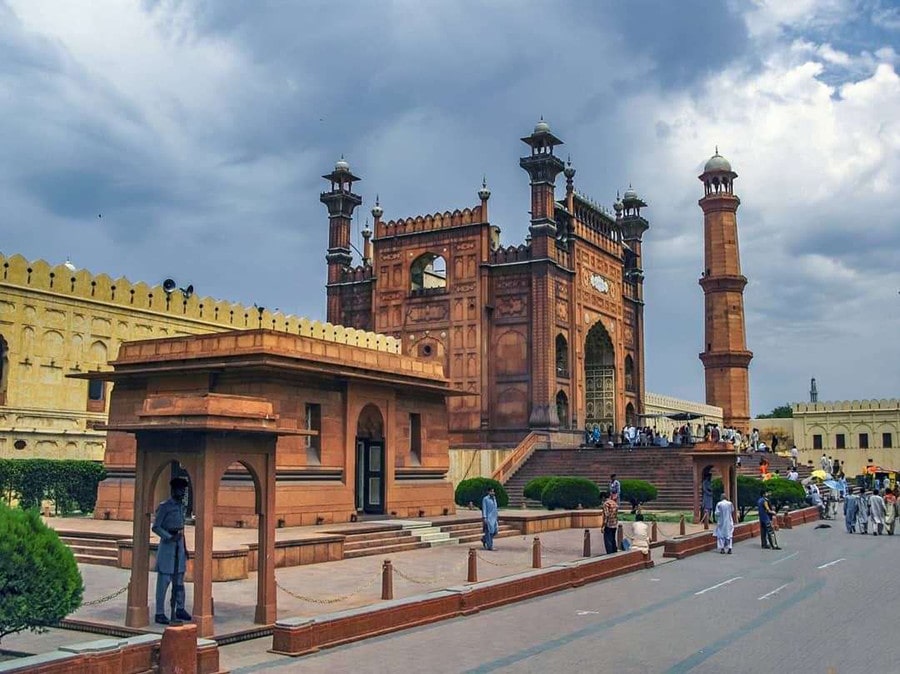Tour to Historical Places in Pakistan
There were diverse cultures and religions in undivided India long before Pakistan was formed after its partition from India in 1947.
According to the World Economic Forum’s Travel & Tourism Competitiveness Report, Pakistan ranks in the top 25% of global destinations for its World Heritage sites, which include the mangroves of the Indus Delta and the Indus Valley civilization sites of Mohenjo-daro and Harappa.
The Hunza and Chitral valleys in Pakistan’s north have many old fortresses and ancient architecture.
Greeks, Central Asians, and Persians ruled Punjab, leaving a number of sites that still stand today. Islam arrived in the region during the Umayyad Caliphate’s reign, which was followed by the Ghaznavids, them Mughals.
Major tourist attractions of the Punjab are Lahore Fort and Shalimar Gardens, recognised as World Heritage Sites. The Walled City of Lahore, Wazir Khan Masjid, Tombs of Jahangir and Nur Jahan, Tomb of Asaf Khan, Chauburji and Badshahi Masjid.
In Rawalpindi, Pharwala Fort is on the outskirts of the city. Sheikhupura also has numerous sites from the Mughal Empire. Rohtas Fort (World Heritage) near Jhelum, Katasraj temple in Chakwal, Khewra Salt Mines (one of the oldest mines in South Asia), Faisalabad’s clock tower and eight bazaars which were designed to represent the Union Jack.
Multan is called Saints city. Multan Museum and Nuagaza tombs are significant attractions.
Bahawalpur is located near Cholistan and Thar deserts. Derawar Fort, Cholistan is prominent site for the annual Cholistan Jeep Rally. Noor Mahal, Sadiq Ghar Palace, Darbar Mall were built by the Nawabs. The ancient city of Uch Sharif is also nearby. Lal Suhanra National Park is a major zoological garden on the outskirts of the city.
Some ancient attractions for tour to historical places of Pakistan are as follows.
- Shah Jahan Mosque, Thatta (1647)
- Masjid Wazir Khan, Lahore (1635)
- Akbari Sarai Mausoleum, Lahore (1637)
- Tomb of Bibi Jawindi, Baha’al-Halim and Ustad, Masjid of Jalaluddin Bukhari, Uch Sharif. Five historical monuments.
- Tomb of Shah Rukn-e-Alam, Multan
- Chaukhandi Tombs, Karachi
- Hingol National Park, Balochistan
- Hiran Minar and Tank, Sheikhupura (1606)
- Mehrgarh, Balochistan. One of the oldest Neolithic ruins and archaeological sites
- Rehman Dheri, Dera Ismail Khan. Ruins of Indus Valley Civilization.
- Harappa, Punjab. Ruins of the Bronze Age
- Katas Raj Temples, near Chakwal. These temples attributed to Hindu Shahi Era dating from about 615–950 CE.
- Nagarparkar Cultural Landscape, Jain religious and cultural centre in Sindh.
- Mansehra Rock Edicts, Mansehra. Eearliest writings of the third century BC.
- Ranigat, Khyber Pakhtunkhwa. Archaeological remains of Buddhist monastic complex.
- Shahbazgarhi Rock Edicts, Mardan. Inscriptions of the Mauryan emperor, Asoka.
- Baltit Fort, Hunza Valley. Tibetan-style fort (13th century)
- Ranikot Fort, Jamshoro District. One of the largest forts in the world.
- Port of Banbhore. Archaeological site along the Indus River.
- Karez System, in Balochistan
- Juniper Forests, Ziarat, Balochistan.
- Altit Fort in Hunza Valley
- Bagrot Valley
- Bala Hissar Fort in Peshawar
- Chaqchan Mosque in Khaplu
- Frere Hall in Karachi
- Khaplu Palace in Khaplu
- Mahabat Khan Mosque-A Mughal Era mosque in Peshawar
- Tombs of Talpur Mirs (17-18 century)
- Faiz Mahal of the Talpur Mirs
- Samadhi of Ranjit Singh
- Tomb of Qutb-ud-din Aibak
- Mohatta Palace (1927)
- Omar Hayat Mahal (18 century)
- Noor Palace (19 century)
- Kot Diji Fort (3000 BC) and Faiz Mahal, The Shrine of Lal Shahbaz Qalandar, Sindh.



